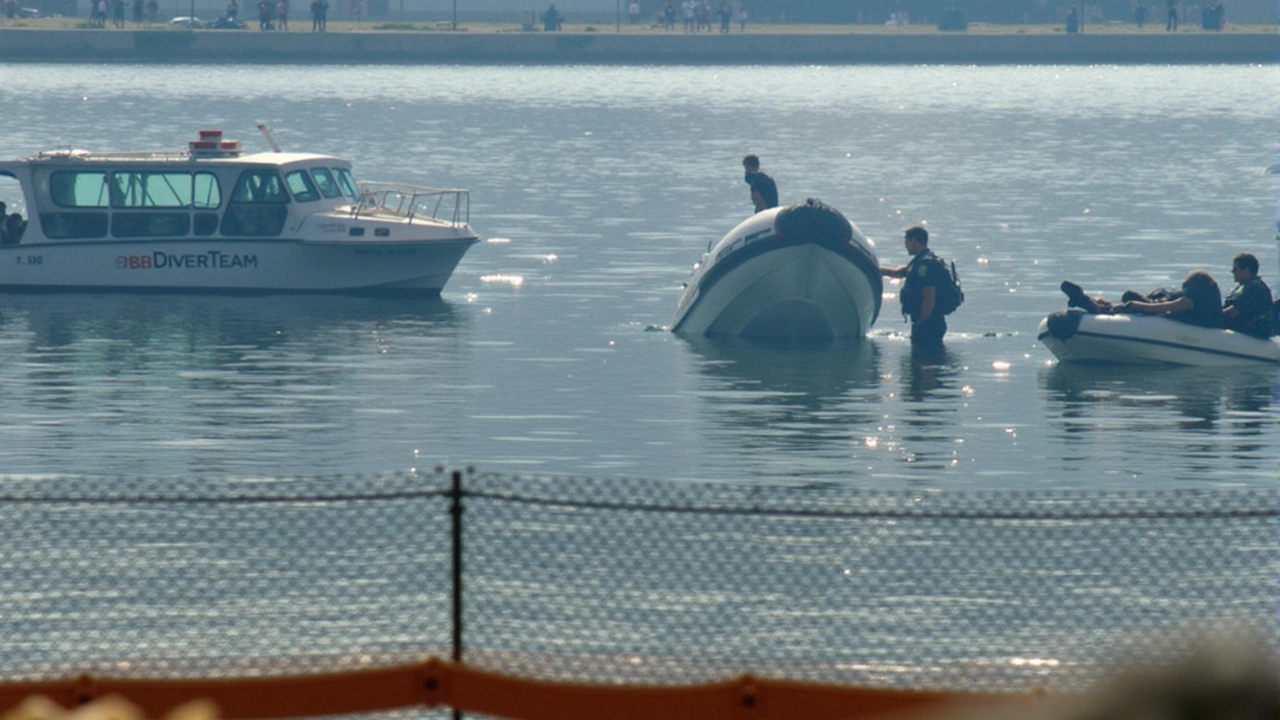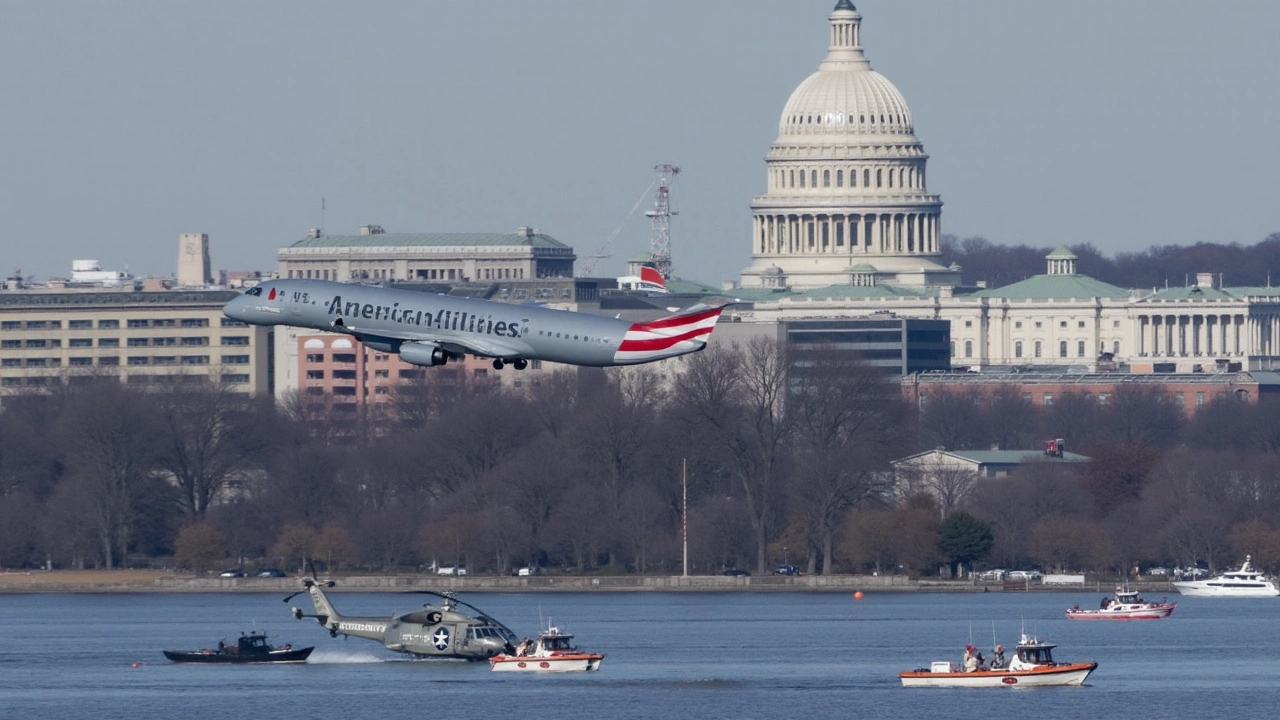Catastrophic Midair Collision Near Washington D.C. Leaves No Survivors
On the fateful evening of January 29, 2025, the skies around Washington D.C. bore witness to a devastating aviation disaster. An American Airlines jet, on its final approach to Ronald Reagan Washington National Airport, collided with a U.S. Army Black Hawk helicopter, leaving a trail of destruction and heartbreak. This tragic incident, which prematurely took the lives of all 67 individuals onboard the two aircraft, marks a somber chapter in the history of aviation accidents in the United States—it is the deadliest in nearly a quarter of a century. The passenger jet, a commercial flight bustling with 60 passengers and a crew of four, was on a routine landing trajectory when it struck the military helicopter engaged in a crucial night training exercise, with three soldiers on board.
Details of the Tragic Collision
The Army helicopter, belonging to the 12th Aviation Battalion, was performing an annual proficiency training mission, a critical part of the military's operational readiness. The soldiers were honing their skills in using night-vision technology, a standard practice for such missions, adding an eerie level of complexity to the entire scenario. In navigating the unique demands of night flying, particularly with night-vision goggles, the challenge becomes substantial. Yet, the unfortunate confluence of flight paths led to the tragic encounter.
Aviation Safety and the Political Ramifications
In the wake of the disaster, the tragedy's ripples reached across the nation, affecting not only the hearts of those directly involved but stirring political and social discourse. Former President Donald Trump, without substantial evidence, attributed the disaster to alleged shortcomings in the Federal Aviation Administration's (FAA) current policies, particularly criticizing its diversity, equity, and inclusion (DEI) initiatives. Trump suggested, controversially, that these initiatives compromised the competence of air traffic controllers and pilots involved in the dire incident. Despite the lack of concrete evidence to bolster his claims, these remarks sparked significant controversy and division, with some lawmakers urging a tempered approach until a full investigation provided clarity.
The Investigation Underway
The National Transportation Safety Board (NTSB), armed with the support of the FAA and the U.S. Army, has since taken the helm of the investigation. Their collective efforts aim to uncover the truth behind this tragic event, examining everything from flight paths and aircraft mechanical failures to the staffing levels and decisions made at the tower during those critical moments. Central to this investigation is the contentious issue of air traffic control staffing at National Airport, which reports suggest was under considerable strain at the time of the accident.
Aviation Safety Under the Microscope
The crash inevitably thrust aviation safety back into the national spotlight, igniting intense debate and analysis across political aisles. Transportation Secretary Sean Duffy and Defense Secretary Pete Hegseth openly aligned with Trump's interpretation, advocating for the prioritization of the 'best and brightest' in aviation and military safety roles. Meanwhile, voices of opposition, including former Transportation Secretary Pete Buttigieg, championed the efficacy of existing safety protocols, pointing towards past records and criticizing Trump's remarks as overtly contentious.
Broader Concerns and Community Impact
Beyond its political connotations, the incident invited a profound reflection on existing aviation safety standards and practices. The tragedy underscored growing concerns about potential understaffing in control towers, an issue not unfamiliar but now acutely accentuated. Amidst the cacophony of blame and scrutiny, the human element—families devastated by loss, communities upended by grief—remains at the core of this tragedy, a poignant reminder of the vulnerabilities inherent in flight.

Nation in Mourning
In the aftermath of the devastating collision, a collective sorrow enveloped the nation. In a bid to honor the victims and offer solace, then-President Trump's call for a national moment of silence was observed across the United States. Additionally, directives were issued for a thorough review of aviation and military procedures to ensure that safety remains paramount, a somber acknowledgment of the need for constant vigilance and improvement.
This collision stands as a deep scar on the American aviation landscape, a call to action for ensuring that the skies remain safe anchors of connectivity. As investigators delve deeper into the causes behind the tragedy, the nation waits, hopes for answers that may prevent future calamities, and prays for healing in the shadow of loss.

20 Responses
ATC crews often juggle more flights than they’re staffed for, especially at busy hubs like Reagan National.
It’s heartbreaking to think of the families left in limbo; such loss ripples through entire communities, and we need compassion over politics.
The NTSB’s multi‑agency approach is standard procedure; they will parse flight data, radar logs, and crew communications to locate the exact point of failure.
One must note the misuse of “DEI” as a scapegoat; such rhetoric distracts from the technical factors that actually govern air‑traffic safety.
Indeed, attributing a catastrophic collision to diversity initiatives borders on the absurd; the real issue lies in procedural compliance and resource allocation.
What if the helicopter’s night‑vision equipment interfered with the jet’s transponder, causing a false altitude reading? Some hidden tech glitch could be at play.
That’s a stretch; equipment standards are rigorously tested, but the investigation will verify any interference claims.
The sky feels emptier after such a disaster, and the silence at the tower must have been deafening.
My heart goes out to every soul affected 😢💔! This tragedy reminds us why vigilance is non‑negotiable!!!
Oh, the irony of a nation that touts technological prowess yet can’t keep a jet and a helicopter apart in clear skies. It’s almost poetic, if it weren’t so devastating.
Let’s cut the melodrama: the facts will speak louder than partisan hyperbole, and the grammar of the report will be pristine if the investigators do their job.
Seen similar incidents overseas where communication gaps, not politics, were the root cause.
We should focus on concrete safety upgrades rather than scoring points on a political scoreboard.
Exactly! When lives are on the line, we need to channel that energy into real change, not endless blame‑games.
Politicians love a tragedy to push their agenda; it’s predictable.
Our military’s readiness is being undermined by bureaucratic nonsense-this is exactly why we need a strong national defense policy!!!
From a philosophical standpoint, this event underscores the fragile interplay between human ambition and the unforgiving nature of physics; perhaps we ought to re‑examine how we balance technological advancement with humility.
Indeed, the nexus of human error and systemic pressures demands a thoughtful, measured response that honors the victims while fostering systemic improvement.
Collaboration between the FAA, NTSB, and the Army will be key; sharing data streams in real‑time could prevent future mishaps.
The incident in question serves as a stark illustration of systemic decay within the United States’ aviation safety apparatus, an erosion that can be traced back to decades of under‑investment and an increasingly politicized regulatory environment. First, it is imperative to recognize that the air traffic control (ATC) infrastructure has been operating under chronic staffing shortages, a fact corroborated by multiple GAO reports highlighting that the average sector occupancy rate exceeds the federally recommended threshold of 12.5 aircraft per controller. Second, the integration of military flight operations into civilian airspace without a robust, redundant deconfliction protocol exponentially elevates risk, as evidenced by the failure to maintain proper vertical separation during night‑vision‑aided missions. Third, the deployment of legacy radar systems alongside modern ADS‑B transponders creates a data fidelity mismatch, leading to potential misinterpretation of altitude and speed vectors by both pilots and controllers.
Moreover, the political weaponization of Diversity, Equity, and Inclusion (DEI) initiatives, as highlighted in recent rhetoric, diverts attention from the core operational deficiencies that precipitate such catastrophes. While DEI programs are essential for a healthy workforce, attributing a collision to these initiatives is not only factually unsound but also undermines the credibility of legitimate safety investigations. Fourth, the NTSB’s preliminary safety recommendations have repeatedly emphasized the necessity for enhanced crew resource management (CRM) training, especially in joint civilian‑military environments where communication hierarchies differ drastically. Fifth, the interoperability of night‑vision equipment with standard cockpit avionics remains insufficiently vetted, a gap that the Department of Defense must address through rigorous joint‑testing exercises.
In summary, the path forward demands a multi‑pronged strategy: reallocation of funding to bolster ATC staffing levels, implementation of real‑time data sharing platforms for civilian and military aircraft, modernization of radar and surveillance infrastructure, and a depoliticized focus on procedural fidelity. Only through such comprehensive reforms can the aviation community hope to restore public confidence and, more critically, safeguard the lives of those who trust the skies to carry them safely.